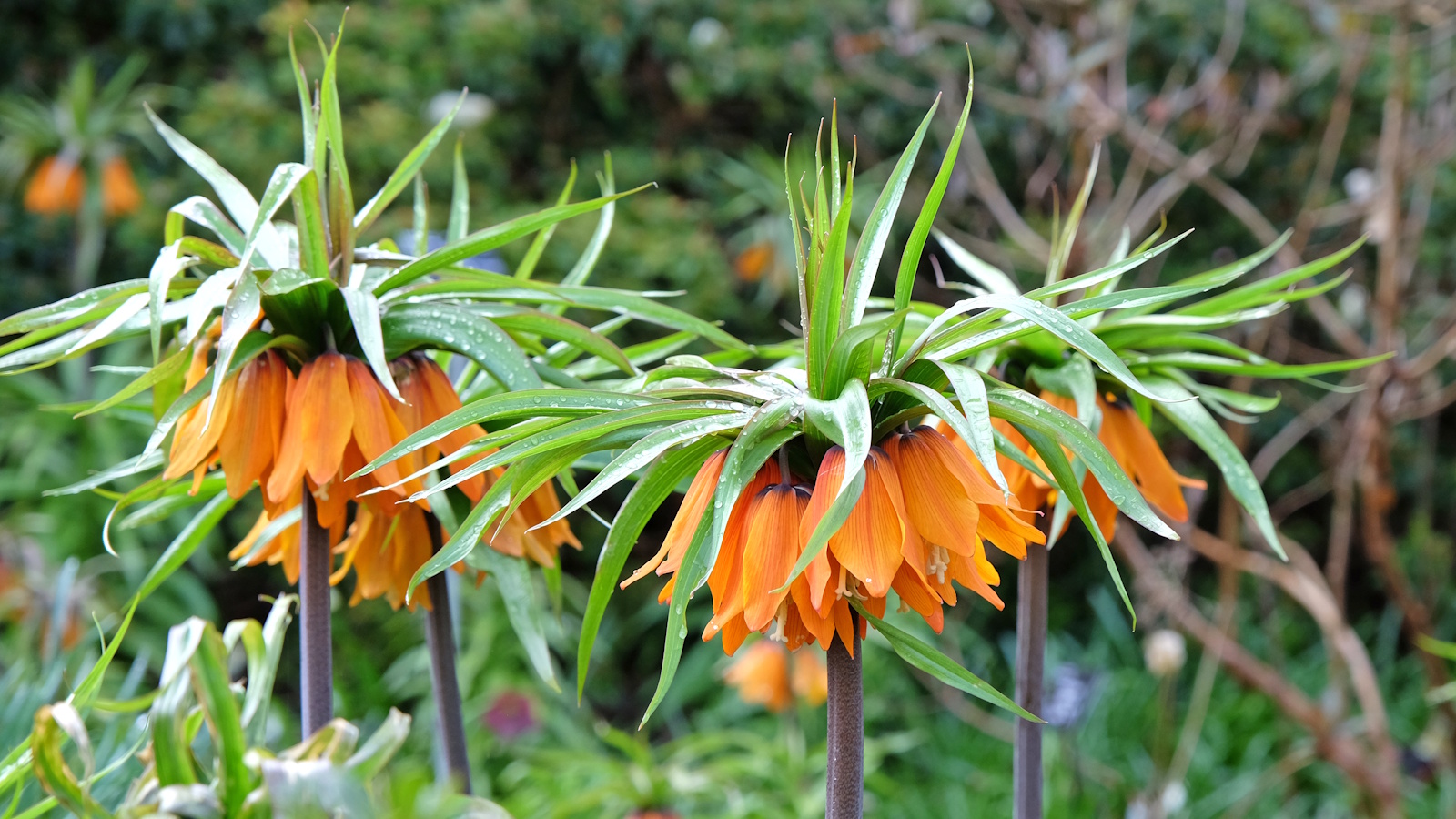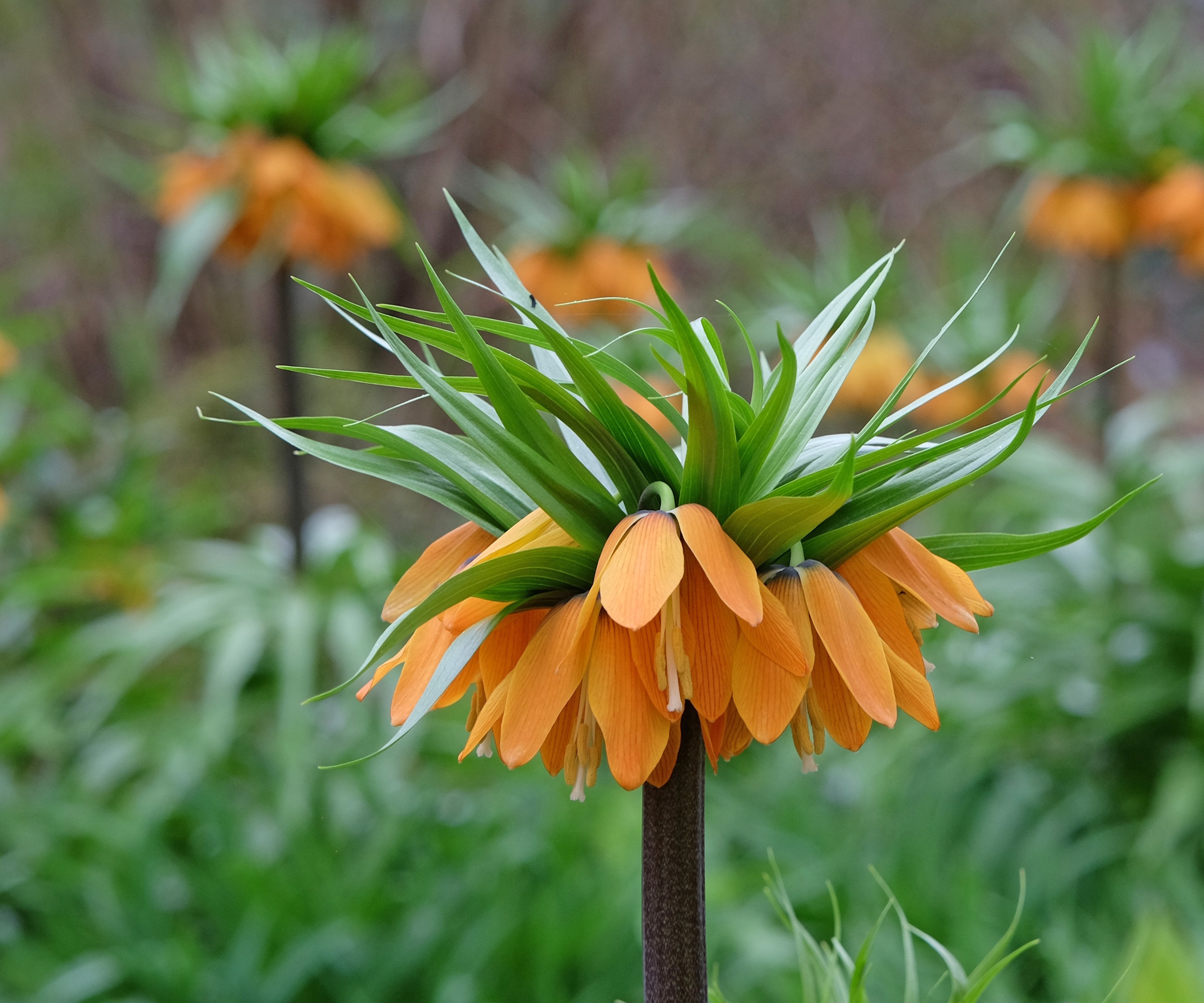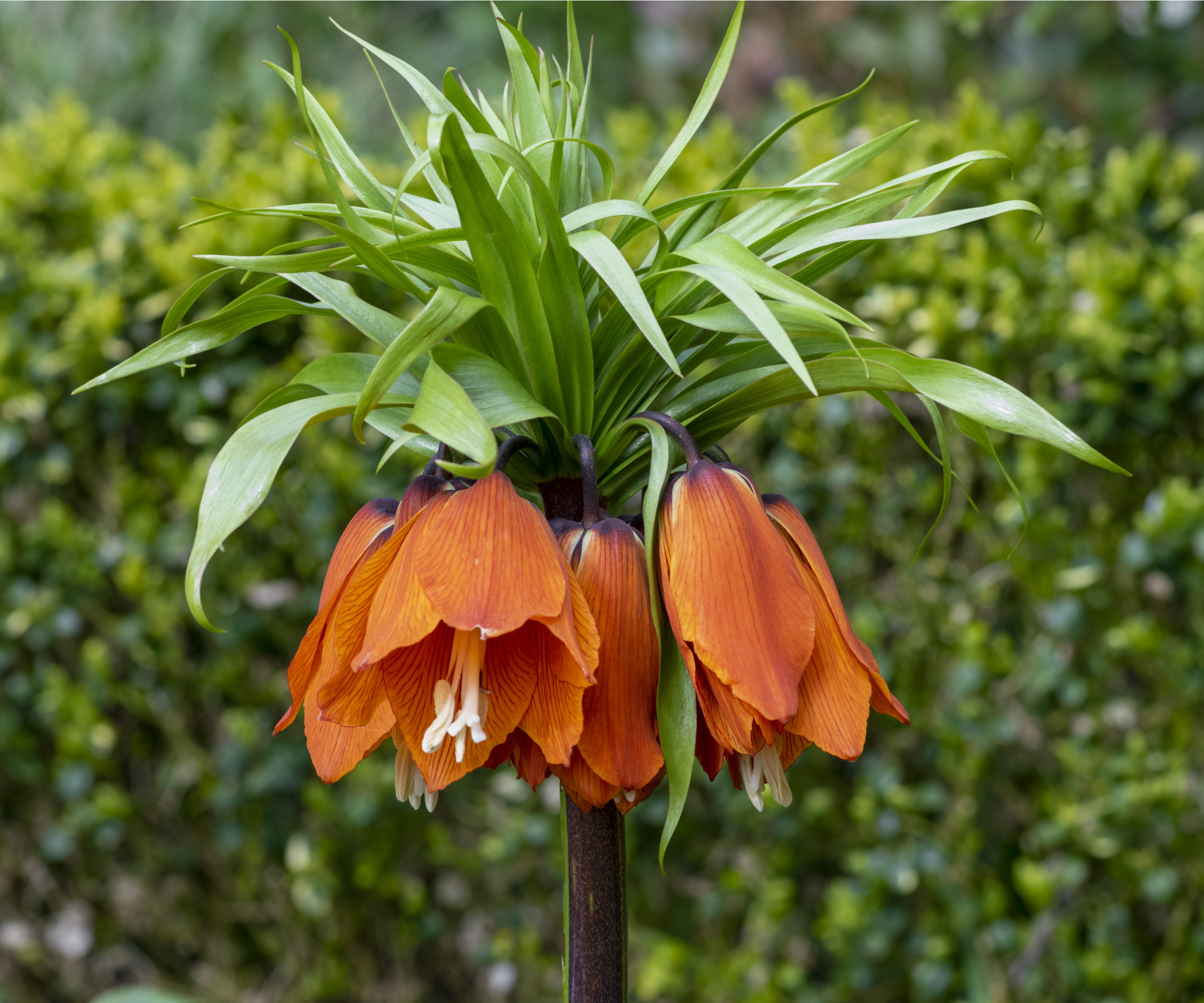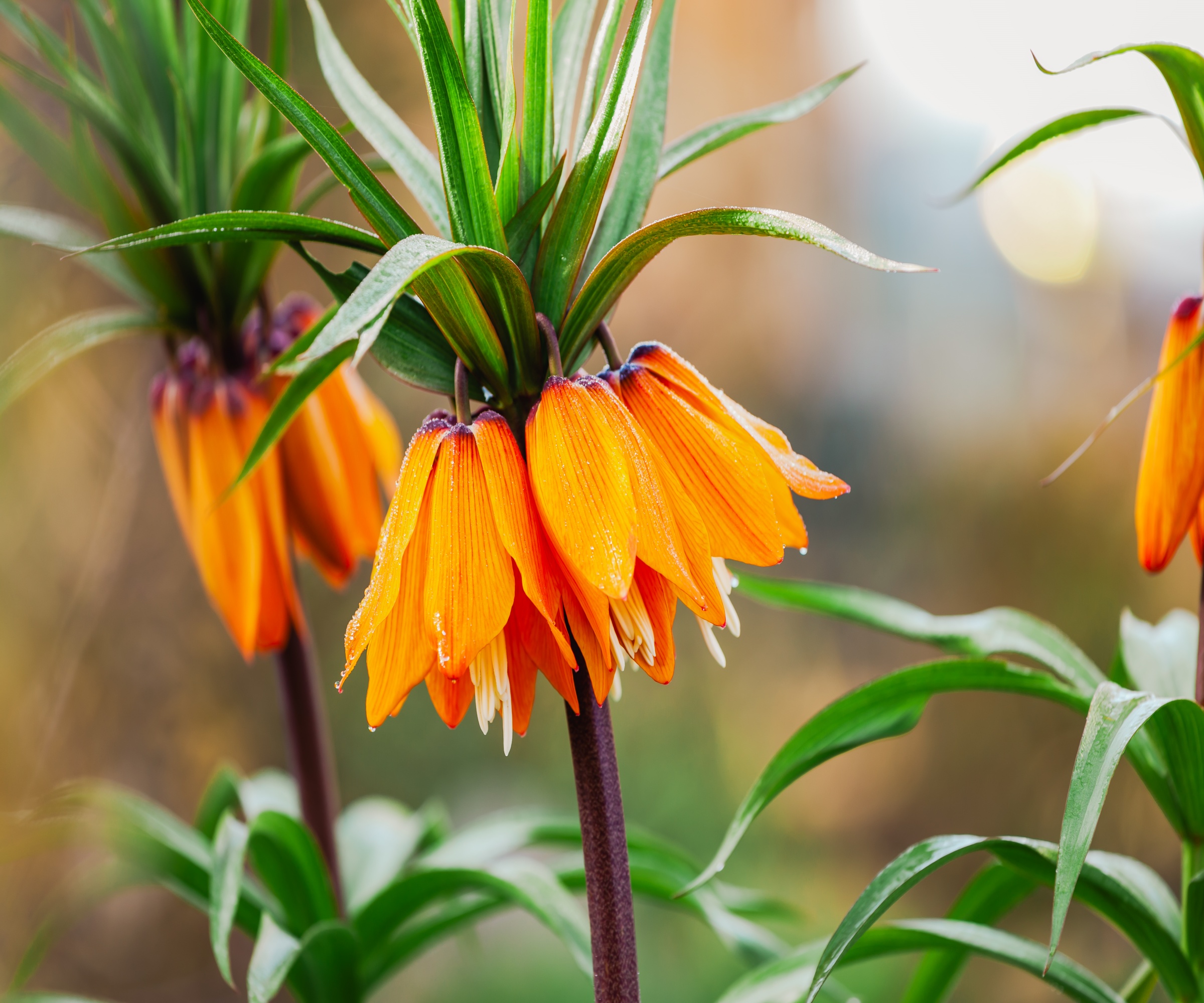
Fritillaries are remarkable plants. This plant genus has over 130 known species found growing in temperate regions worldwide, mostly in Europe and Asia, although there are 20 species native to North America. One easily recognizable species is the imperial fritillary, Fritillaria imperialis.
Native to the Anatolian plateau, this architectural fritillary is found growing in the wild across much of Turkey, Iraq, Iran and Afghanistan, even reaching so far as the foothills of the Himalayas. With large orange or yellow crown-like flowers, it is hard not to be drawn in by this majestic plant.
Fall is an ideal time to plant imperial fritillary bulbs. As a former professional gardener, I have planted thousands of bulbs, including many different species of fritillary. I have found that planting between October and December produces the best results, allowing bulbs time to establish root systems before the cold of winter arrives. So, if you are looking to grow some high-impact bulbs next spring, why not learn how to plant imperial fritillaries this fall?

How to plant imperial fritillaries
Imperial fritillaries are unusual bulbs to plant in fall, with dramatic displays of large, vibrant blooms. If you are looking to order bulbs in subtle shades or dwarf sizes, then this is not the species for you. Imperial fritillaries are for gardeners who enjoy color and impact in their borders. So, if you are anything like me and tend to lean toward the maximalist aesthetic, why not try your hand at growing this unique spring flowering bulb this year?
When to plant imperial fritillaries

'Fritillaries are spectacular spring blooming bulbs,' says Reese Robbins, garden expert and creator of Just Pure Gardening. 'Unusual and over the top, they add striking visual interest to garden borders in May and June.'
'Known for their bright and brilliant colors and architectural form, imperial fritillaries appeal to gardeners looking for something beyond the usual floral varieties,' Reese adds.
As with all fritillaries, Fritillaria imperialis are spring bulbs to plant in fall, so it is best to add this job to your fall gardening checklist. My advice: pick a dry, mild day in October, November or December, and get your imperial fritillaries in the ground.
These Fritillaria Imperialis 'Rubra Maxima' bulbs are best planted in the fall months, blooming the following spring.
Planting advice for imperial fritillaries

'Fritillaries can be planted from US hardiness zone 4 to US hardiness zone 8, doing best in a part-sun-part shade location in the yard,' Reese says. 'Select a spot for your imperial fritillaries in a location that gets morning sun but is shaded in the hotter afternoon hours to prevent wilting.'
So, once you have ordered your imperial fritillary bulbs, available from Amazon, and you have selected the correct location in the border, you are ready to get planting.
In terms of essential gardening tools you will need, you can use a small border fork or spade, or why not check to see if there are any exciting bulb planter deals and purchase a bulb augur that will make the job that much easier?
When planting, take your time and work slowly, as you don't want to slice through any other bulbs in the ground. In terms of how deep to plant bulbs, I would suggest getting your imperial fritillary bulbs at least 10 to 12 inches in the ground. These are large bulbs and to give them the best chance, you need to plant them as deep as possible.
When training for my horticultural traineeship in London, I was taught to plant imperial fritillary bulbs on their side, which can help to prevent water from sitting inside the bulb thereby causing rot. While the bulb will probably right itself over the growing season, planting them on their side in the fall gives them the best chance to succeed.
After you have backfilled the planting hole, water the ground. You should not need to water again until the spring, as there tends to be plenty of rainfall in fall and winter.
You will see small green shoots in the early springtime. At this point, it is a good idea to do a spot of mulching around the shoot, to feed the soil, suppress weeds, and retain moisture as the temperatures rise.
This handy set includes bulb planters, a kneeling pad and one pair of handy gardening gloves.
The bulb planter has a wooden handle and a sharp edge to quickly and easily break through the soil surface.
This bulb planter set includes one long-handled planter, making it easier to plant bulbs without bending over.
FAQs
Can I grow imperial fritillaries in a pot?
In my experience, imperial fritillaries are bulbs to never plant in pots. While they would be fine in a very large container, these are tall bulbous plants, and in small pots, they would easily topple over. It would be best to grow a different species in pots, such as Fritillaria meleagris, or the snake's head fritillary, which works well in containers, allowing you to enjoy these unique flowers on patios or terraces.
Finally, be sure to pick a planting location that is away from your home and not near any seating areas. Imperial fritillaries tend to have a strange smell, so if you are looking to create a sweetly-smelling fragrant garden, you might consider planting lots of daffodils and hyacinths to mask their musky odor. One final word of caution, imperial fritillaries are toxic to humans and pets, so always handle them with care.







